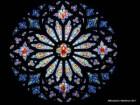
Psalm 84 has appealed to me ever since I encountered it in the Brahms Requiem when I sang in the chorus during my undergraduate years at the University of Southern California. It expresses the profound appreciation I feel for the natural world and the exaltation that sweeps over me during walks when I contemplate the beauty of our planet. When I was commissioned by Soli Deo Gloria to compose a psalm setting as part of the organization’s psalms project, I immediately thought of #84.
The range of moods varies from quiet contemplation to ecstatic joy and the challenge was to encompass these in a brief eight- minute composition. The key was the recurring phrase “How Lovely is Your Dwelling Place.” I looked up the English translation as well as the original words in Hebrew. What I discovered was that there were multiple English words to every Hebrew word, the implication being that the nuances of the text could not be expressed with a single word or phrase. Rather than choosing just one, I decided to include all of the various meanings, making my translation of the text a commentary of differing viewpoints.
The result was that each phrase became extended, an example being the first phrase: “How lovely, how blessed, how beautiful, how beloved.” When this phrase first occurs at the very opening of the piece, the basses begin, with the tenors, mezzo-sopranos and sopranos overlapping in canon, each voice beginning a fifth above the other. The intensity grows with the accumulation of voices, and as the sopranos complete the final iteration, the mezzos, tenors and basses sing the original Hebrew words as an accompaniment, ending in the first cadence on a forte chord. After this all the voices join together singing the phrase whispered pianissimo, like a meditative prayer.
The following section expresses the word “Yearning,” and again, because there were multiple English meanings to the Hebrew words, I included them all: “I yearn, I pine, I long, I hunger.” This section grows by short, overlapping phrases, unlike the long phrase of the first section, and ends in a cadence higher and more intense than the first section.
There are several fugal sections, the first to the words “My body and soul.” Here each of the vocal groups has different English translations: “My body and soul, my spirit and breath, my feeling and heart, my being and voice.” All of the voices come together at the conclusion of the third cadence with the word “rejoices!” This word cried out for an antiphonal shout of joy.
There follows a fugue at the fifth, recalling the interval of the entrances at the beginning, but this time the subject is worked out in fugal fashion with counter-subject and inversion. The prayer-like repetition of “How Lovely is Your Dwelling Place” returns as a brief interlude before the final fugue, which is worked out in augmentation, diminution and double augmentation, as well as in inversion.
The following section echoes the “rejoices” music, this time to the words “They praise you,” which are sung first antiphonally and then by the women’s voices over the original melody, sung by the men. The setting ends with the opening phrase sung accapella, first softly whispered and then forte, with the organ concluding the phrase under the chorus’ sustained chord.
Counterpoint forms the basis of my musical language in this setting, it being a traditional technique favored by Baroque composers. Counterpoint was also a useful tool to express the multiplicity of translations, perspectives and moods I wanted to illuminate. The voices unify only during the communal prayer-like settings of the opening text.
Click here to view the combined choirs of Temple Emanu-El & the Cathedral Church of Saint John the Divine conducted by Kent Tritle.
 Back to List
Back to List